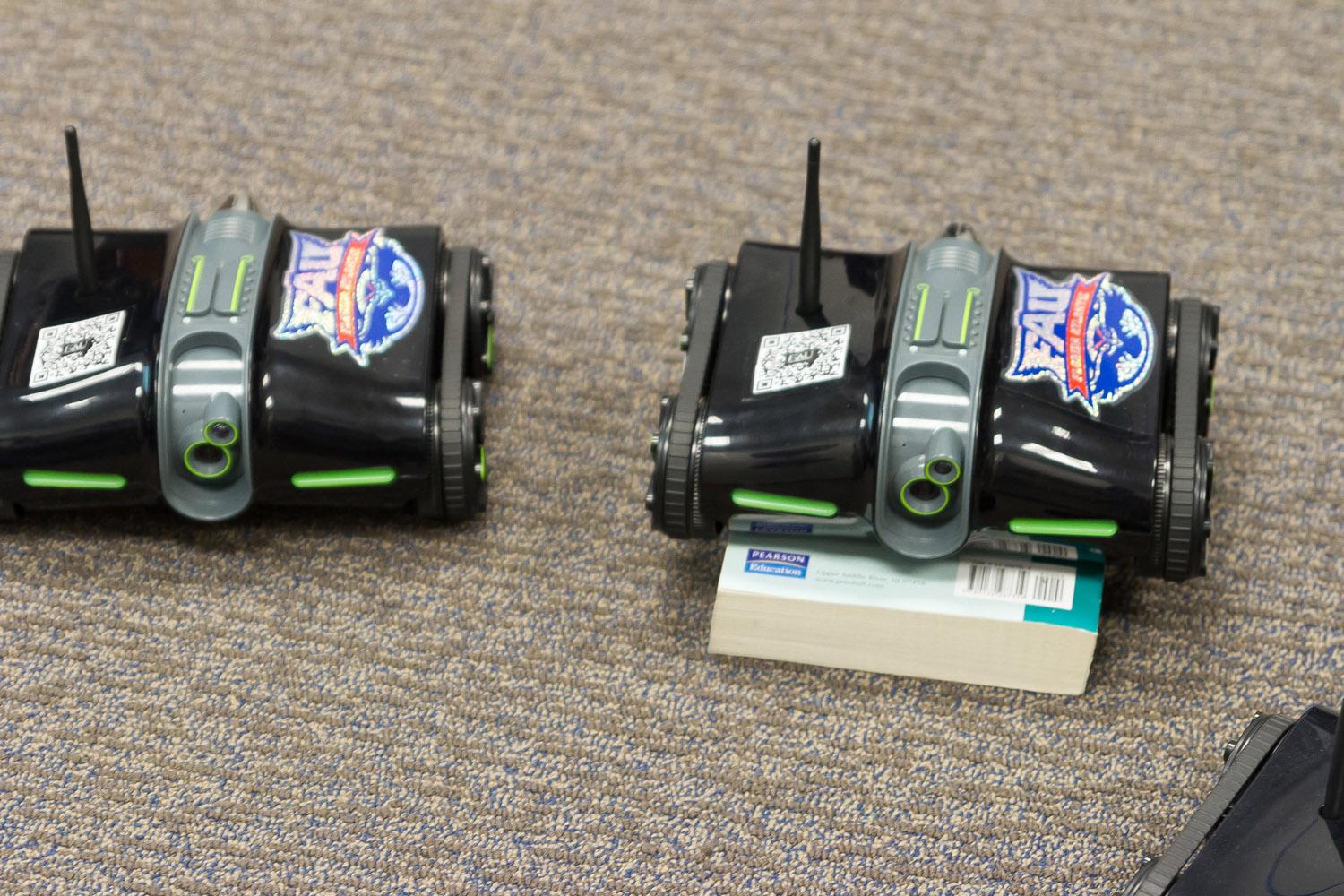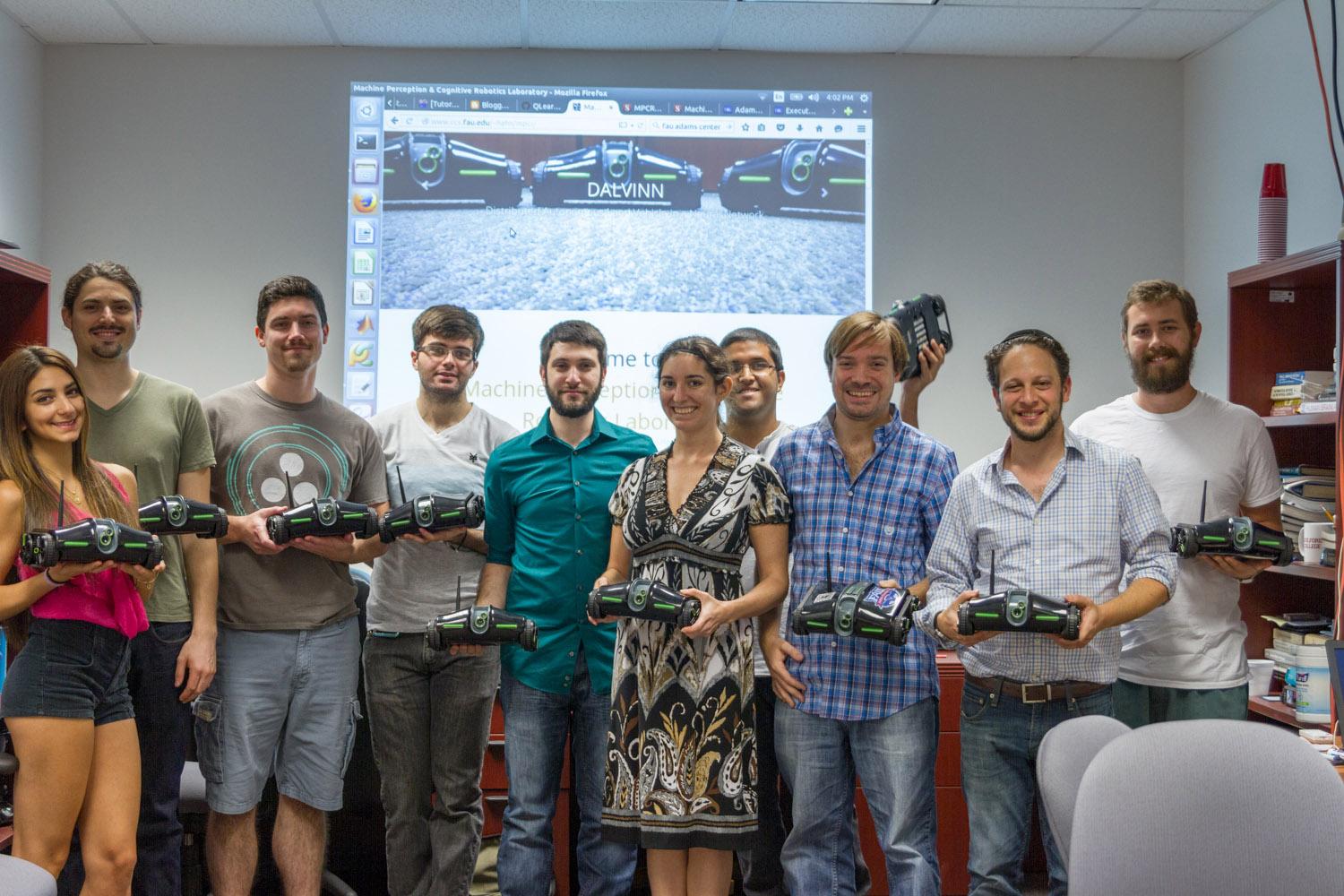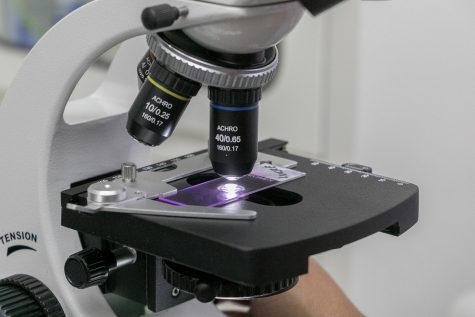Researchers are creating their own test subject
Researchers at FAU are developing an A.I. that they hope will eventually replace the use of a lab rat in experiments
“The Thinker,” Statue by Auguste Rodin. Photo courtesy of Yair-Haklai Photo Illustration by Andrew Fraieli | Science Editor
November 23, 2015
A small toy rover exploring a room like a skittish mouse may not seem to be a scientific feat. But the absence of anyone controlling it is.
Moving of its own accord, this “robotic rodent” sees with a camera attached to its front and “thinks” with an algorithm that simulates a rat’s brain on a computer server.
“It’s virtual biology,” says psychology professor Elan Barenholtz, the director of the Machine Perception & Cognitive Robotics Laboratory on Florida Atlantic’s Boca Raton campus.
“Our main goal is not to make a functional robot to, say, get coffee,” he says. “We’re trying to replace the lab mouse to develop a computer-based model of real intelligence to test psych theories on.”

This is the first step toward artificial intelligence at FAU.
After opening in January 2014, the lab received funding from the university and a grant from the National Science Foundation for about $200,000. The NSF awards about 11,000 research laboratories around the country, funding, projects like 3-D mapping of the brain and sequencing an octopus genome.
The laboratory runs like a club and is open to all undergraduate and graduate students. There are approximately 11 students involved, who study subjects ranging from computer science to psychology.
What separates MPCRL’s work from other AI efforts is the fact that FAU’s AI was not pre-programmed to complete a single task, but to learn — just like a human brain.

William Hahn, Elan Barenholtz. Jasmyn Williams | Contributing Photographer
Deep Blue is famous among the AI community for being the first computer to beat a world chess champion, Garry Kasparov. This AI was programmed specifically to play the game though. “Train it for chess and give it Tic-tac-toe and it collapses,” says William Hahn, a Ph.D. candidate working in the lab.
Barenholtz explains that MPCRL’s bot, contrary to Deep Blue, has “a general purpose brain.”
Creating an AI permits scientists to “ask fundamental biology questions in a way that allows us to parameterize in ways we can’t with live subjects,” says Barenholtz. Essentially, researchers are able to study the capability of a brain under different restrictions.
To further explain, Michael Kleinman, a psychology Ph.D. candidate in the lab says, “With rats we only let them go left or right [in a maze], restricting them. This allows us to test only for what we want to test for.”
The concept is the same with the “robotic rodents.”
The brain of the bot is on the lab’s server and consists of computer models of real biological brains, simulating connecting nodes like neurons. The “brain signals” are sent via Wi-Fi to the bot. The lab then teaches it to act based on what
it “sees.”
One exercise the lab conducted involved color. Barenholtz describes it as operant conditioning: “We mold the rodent to get it to do what we want.”
By forcing the bot’s actions, like moving forward or backward, when presented with specific stimuli — different colored paper — the bot learned to associate colors with actions. They could tell it began to learn when they showed it all of the colors at once and it started moving randomly out of confusion.
The operant conditioning Barenholtz refers to is similar to how drivers have been taught to stop at red lights and go at green lights.
Artificial intelligence is already taking over human activities, according to Barenholtz.
“Human drivers are already obsolete,” he says, referencing the Google car.
“Terminator probably isn’t going to chase you down the street, but it will take your job,” says Hahn, in agreement with the professor’s view.
But whether a Skynet-level intelligence could take the human race by the neck is not a question Barenholtz sees as having an obvious answer. “It’s an open question if they can achieve common-sense intelligence, but it’s not a question of more power or more processing.” He sees it as a question of more complex algorithms and a better understanding of
the mind.

















Vivi Acker Levy • Dec 4, 2015 at 5:03 pm
Very exciting news…Hope it leads to many good experiments and applications!